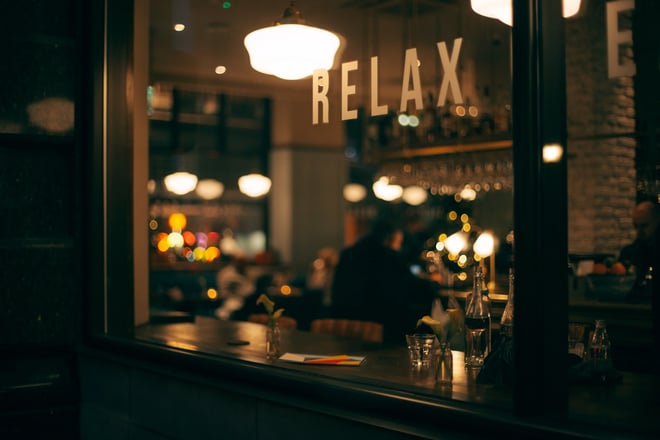An angel shot is a code word used by guests in a bar or restaurant to let staff know that they require assistance because they feel unsafe.
It’s a discreet way for guests to ask for help from, say, a bartender in situations where they may potentially be in danger.
Types of angel shots: understanding the angel shot with a twist
Famous variations and types of angel shots include the following drink orders:
-
“Angel shot straight up” or “angel shot neat” — this indicates that the guest needs someone to escort them outside or to their car.
-
“On ice” or “on the rocks” — the bartender or staff member should call a taxi or ride service to take the patron home safely.
-
“With a lime” or “with a twist” — if a patron orders these variations, the bars’ staff should call the police (see below).

Angel shot “with a lime” or “with a twist”
“Angel shot with a lime” and “angel shot with a twist” are two variations of the angel shot used to signal the same level of emergency.
When a customer orders an angel shot with a lime or with a twist, it indicates that they are in immediate danger, to the point where the restaurant staff needs to call the police.
When requested, these variations above should be taken with the utmost seriousness, and the guest should not be left unattended until staff takes appropriate action.
Codewords meaning the same as angel shot
The use of codewords to signal for help in bars and restaurants needs to be standardized across countries. The angel shot is primarily used in the United States, but some of its specific variations, such as “with a lime” or “with a twist,” may not be as widely recognized outside the US. These codewords are essential for patrons who feel unsafe and need a discreet way to ask for help.
Other countries may have their own codewords or variations on the angel shot. In the United Kingdom, for example, many establishments use the signal phrase “ask for Angela” to signal for assistance at the bar or to restaurant staff.
In Australia, some establishments use the codeword “Oscar” at the bar or restaurant to indicate that the customer needs help getting home safely.

How to implement the angel shot codeword in your bar/restaurant
Here are several straightforward steps to implement the angel shot sign and help keep your customers safe at your bar or restaurant:
-
Train your bar staff. All staff members need first to understand what the angel shot order is and how to respond when someone asks for it. Most bartenders should be trained to recognize and respond to these orders to ensure customer safety. Educate them on the meaning of the codeword and make sure they know the appropriate actions to take for guests in an unsafe situation.
-
Display signage. A common practice is to display posters and other signs in the women’s bathroom or other discreet locations to inform customers that angel shots are an available option for them. You can also promote your establishment’s commitment to this safety system online, e.g. through your restaurant ads on Instagram.
-
Establish a protocol. Decide on a specific protocol for responding to people who order an angel shot. Staff may be instructed to call a friend or family member or provide a safe space for the person until they feel comfortable leaving.
-
Respect confidentiality. You and your staff members should respect the confidentiality of the person who asks for an angel shot. Only disclose their request to someone else if they permit it.
-
Regularly review and refresh your training. Make sure to refresh your staff’s training on the angel shot protocol every once in a while to ensure that everyone is prepared to respond appropriately to keep guests safe.

Where to hang an angel shot sign?
Here are some ideas for where to put up angel shot signage in your bar:
-
Near the restroom — many bar or restaurant owners opt to hang angel shot signs in or near women’s bathrooms, where customers can see them when they’re alone.
-
Near the bar — placing signs near the bar area is another option, as this is often a central location where guests can easily see the signs.
-
In the entrance or lobby — hanging signs in a prominent area like the entrance or lobby lets new customers know about the availability of angel shots.
-
On table tents or coasters — consider printing information about angel shots on table tents or coasters so that people can see the option right in front of them if needed.
-
On your social media channels — indicating that your establishment offers angel shots somewhere on your social media profile(s), e.g. next to the Reserve button, is also a great way of informing current and future customers of the option.

Should your bar offer angel shots?
So, you’ve had your grand opening, done all your promotions, and now you want to integrate the angel shot system into your bar or restaurant safety protocols. This is a good thing!
The concept of angel shots has become so popular because it is a simple way to promote safety and prevent sexual harassment or assault in a respectable establishment. However, the decision of whether to offer angel shots is ultimately up to each operator or business owner.
Offering angel shots can demonstrate that your bar or restaurant takes the well-being of its guests seriously.
Pros and cons of offering angel shots
There are some clear benefits to offering angel shots. For one, it can help customers feel safer and more comfortable in your establishment, which could lead to repeat business, positive word-of-mouth, and guest loyalty.
Additionally, offering angel shots can demonstrate that your bar or restaurant takes safety seriously and is committed to providing a harm-free and welcoming environment for all bar patrons.
However, some bar owners and managers worry that the concept of angel shots could be misunderstood or misused, leading to confusion or false alarms.
There is also the concern that some customers may rely too heavily on the idea of an angel shot and not take appropriate steps to protect themselves in a potentially dangerous situation.
If you do decide to offer angel shots, be sure to continue promoting other safety measures at the same time, such as having a visible security presence and encouraging customers to watch out for each other.
How bartenders should respond to angel shots
Here are some basic guidelines for how bartenders and other restaurant staff members should respond to requests for angel shots:
-
Respond discreetly. When a customer orders an angel shot, the staff member must respond in a discreet and non-judgmental manner. Discreet reactions include taking the customer aside to talk in a quieter area or finding another subtle way of communicating with them to get all the necessary details.
-
Make it a priority to assist. If the customer genuinely feels unsafe, the bartender should focus on helping them. They should drop whatever they’re doing (whether that be—preparing drinks or managing restaurant reservations) and immediately call a ride service, find a safe place for the customer to wait for their ride, or call the police if necessary. This is crucial in preventing incidents of sexual assault and ensuring the safety of the patron.
-
Respect the customer’s privacy. The staff member should not share the customer’s request for an angel shot with others.
-
Follow up. After assisting, it’s a good idea for the staff member to follow up with the patron, later on, to make sure they made it home safely.
Conclusion
Creating a safe environment in your restaurant or bar should be a top priority. By implementing the angel shot system, you can offer your guests a discreet way to signal for help if they feel uncomfortable or unsafe. This can go a long way in preventing incidents of harassment or assault and making your guests feel more at ease.
Remember to train your staff on how to respond to these signals and to make it clear to your customers that this option is available to them. By doing so, you can create a welcoming and secure atmosphere for all who enter your establishment.
And if you're looking for other ways to improve your customer's experience, consider using Eat App, our restaurant management system designed to streamline operations, increase efficiency, and ultimately improve your bottom line. Sign up now!
This article was updated on 03 July, 2023.














.webp?width=200&name=v2-15mknc-qpw1b%20(1).webp)
.webp?width=200&name=v2-15kqni-p0exl%20(1).webp)
-1.png?width=1812&height=1072&name=TripAdvisor%20%26%20More%20Bookings%20(1)-1.png)
-2.png?width=1812&height=1072&name=Google%20Bookings%20(1)-2.png)


-1.png?width=200&name=TripAdvisor%20%26%20More%20Bookings%20(1)-1.png)
-2.png?width=200&name=Google%20Bookings%20(1)-2.png)
-1.png?width=200&name=Instagram%20Bookings%20(1)-1.png)
-1-png.webp?width=200&name=Facebook%20Integration%20Rectangle%20(1)-1-png.webp)







.webp?width=200&name=download%20(1).webp)
%20(1)-2.webp?width=200&name=Eat%20(34)%20(1)-2.webp)
%20(1)-2.webp?width=200&name=Eat%20(18)%20(1)-2.webp)







.webp?width=314&height=175&name=image2%20(5).webp)


.webp?width=144&height=72&name=Eat%20App%20Logo%20(3).webp)